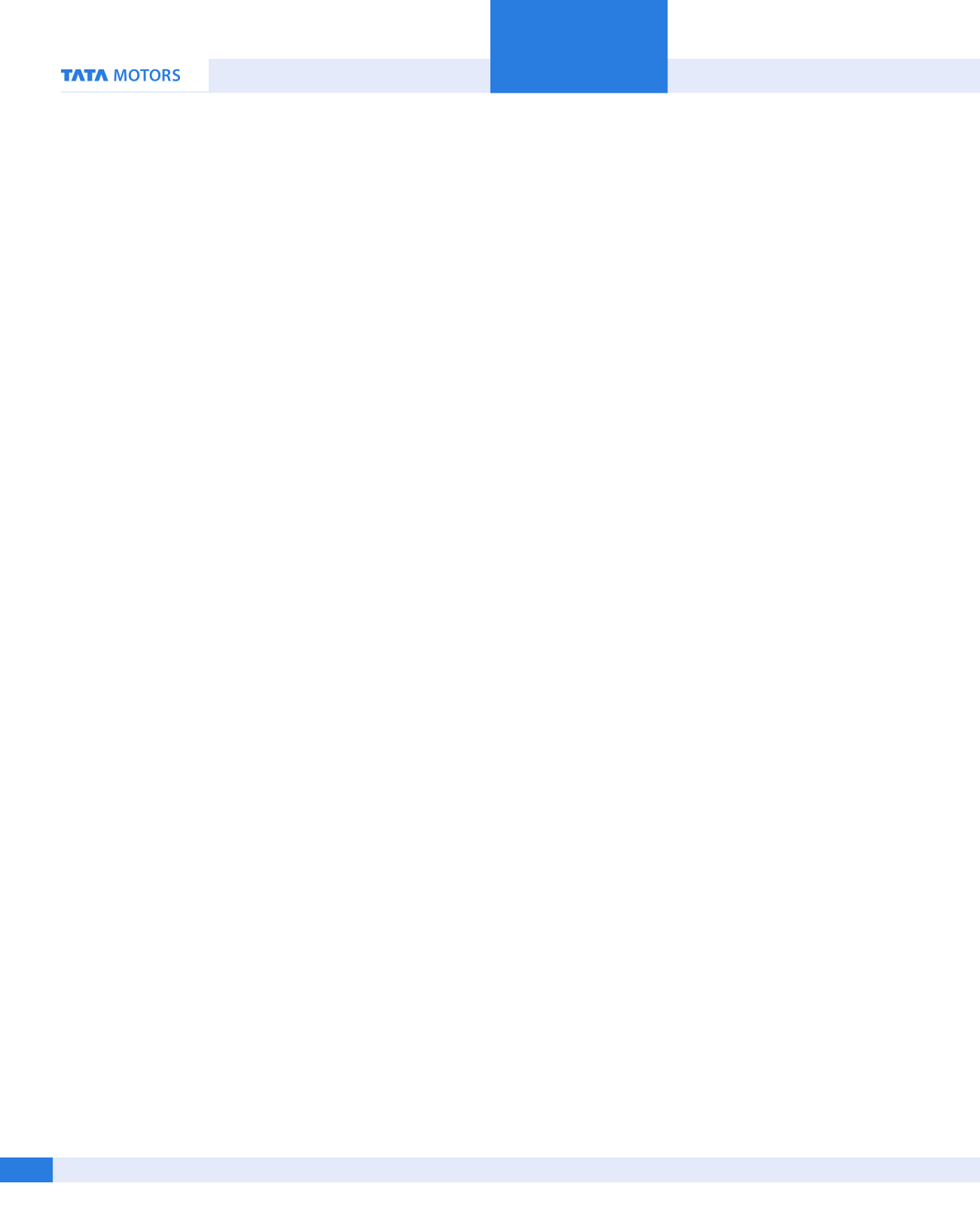

Corporate Overview
Financial Statements
Statutory Reports
86
72nd Annual Report 2016-17
MATERIAL CHANGES & COMMITMENT AFFECTING THE
FINANCIAL POSITION OF THE COMPANY
There are no material changes affecting the financial position of the
Company subsequent to the close of the Fiscal 2017 till the date of
this Report.
SIGNIFICANT & MATERIAL ORDERS PASSED BY THE
REGULATORS OR COURTS OR TRIBUNALS
There are no significant material orders passed by the Regulators
or Courts or Tribunal, which would impact the going concern
status of the Company and its future operation. However, Members
attention is drawn to the Statement on Contingent Liabilities and
commitments in the Notes forming part of the Financial Statements.
RISK MANAGEMENT
The Risk Management Committee (RMC) comprising of four
Independent Directors, has been entrusted with responsibility to
assist the Board in (a) overseeing the Company’s risk management
process and controls, risk tolerance and capital liquidity and funding
(b) setting strategic plans and objectives for risk management and
review of risk assessment of the Company (c) review the Company’s
risk appetite and strategy relating to key risks, including credit risk,
liquidity and funding risk, market risk, product risk and reputational
risk, as well as the guidelines, policies and processes for monitoring
and mitigating such risks.
The Committee operates as per its Charter approved by the Board
and within the broad guidelines laid down in it. The Company has
a Risk Management Policy in accordance with the provisions of the
Act and SEBI (Listing Obligations and Disclosure Requirements)
Regulation, 2015 (“SEBI Listing Regulations”). It establishes various
levels of accountability and overview within the Company, while
vesting identified managers with responsibility for each significant risk.
The Board takes responsibility for the overall process of risk
management in the organisation. Through Enterprise Risk
Management programme, business units and corporate functions
address opportunities and the attendant risks through an
institutionalized approach aligned to the Company’s objectives. This
is facilitated by internal audit. The business risk is managed through
cross functional involvement and communication across businesses.
The results of the risk assessment are thoroughly discussed with the
Senior Management before being presented to RMC.
INTERNAL FINANCIAL CONTROLS WITH REFERENCE TO
THE FINANCIAL STATEMENT
Details of internal financial control and its adequacy are included in
the Management Discussion and Analysis Report, which forms part
of this Report.
HUMAN RESOURCES
The Tata Motors Group employed 79,558 permanent employees
(Fiscal 2016: 76,598 employees) as of Fiscal 2017 and the Company
employed 26,035 permanent employees (Fiscal 2016: 26,569
employees) as of Fiscal 2017. The Tata Motors Group has generally
enjoyed cordial relations with its employees and workers.
The Company has labour unions for operative / worker grade
employees at all the plants across India, except the Dharwad Plant.
The labour union at Sanand Plant has recently been registered and
the first settlement is yet to be done. The Company has generally
enjoyed cordial relations with its employees and unions at its factories
and offices and has received union support in the Company’s
implementation of reforms that impact safety, quality, cost erosion
and productivity improvements across all locations. Employee wages
are being paid in accordance with wage agreements that have
varying terms (typically three to four years) at different locations.
With an objective of improving Organizational Effectiveness, the
Company decided to undertake a structure change exercise with
key guiding principles of Empowerment to the Business Units with
clear accountability for business results, strong functional leadership
and oversight for an effective maker-checker concept, improved
and speedier decision making, agility and quick responsiveness to
market, and strong cross functional alignment to drive quick issue
resolution. A new product line organization has been created with
complete Profit & Loss responsibility.
Organisational restructuring has delayered the organization to 5
managerial levels below ExCom. This has made the organization lean
and agile. The Company has also rationalized span of control of key
roles, providing scope for career development and have significantly
increased customer facing roles in both the BUs to enhance customer
centricity in the organization. Transactional roles have been identified
across functions for transition to shared services, and therefore focus
on core activities.
Volumetric study has been performed to identify optimum
manpower at each level, bringing the organizational spread closer
to global standards. This, combined with the Job Evaluation exercise
and Management Audit helped in establishing clear job descriptions
for each role and identifying the right talent for the roles.
The Executive Committee conducted a thorough assessment of
potential candidates for the top 2/3 levels in the organisation. The
assessment results were used for placement of the candidates, which
was followedupwith ‘onboarding’workshops andAstronautTrainings
to prepare the management teams for the new responsibilities.
In order to create a mind-set free of job titles and hierarchy, the
concept of designations has been abolished and individuals will carry
the title of their functional role. After market benchmarking, revised
Compensation & Policies have been rolled-out. The new terms and
conditions of employment has been shared with the employees
through individual letters by respective managers.


















